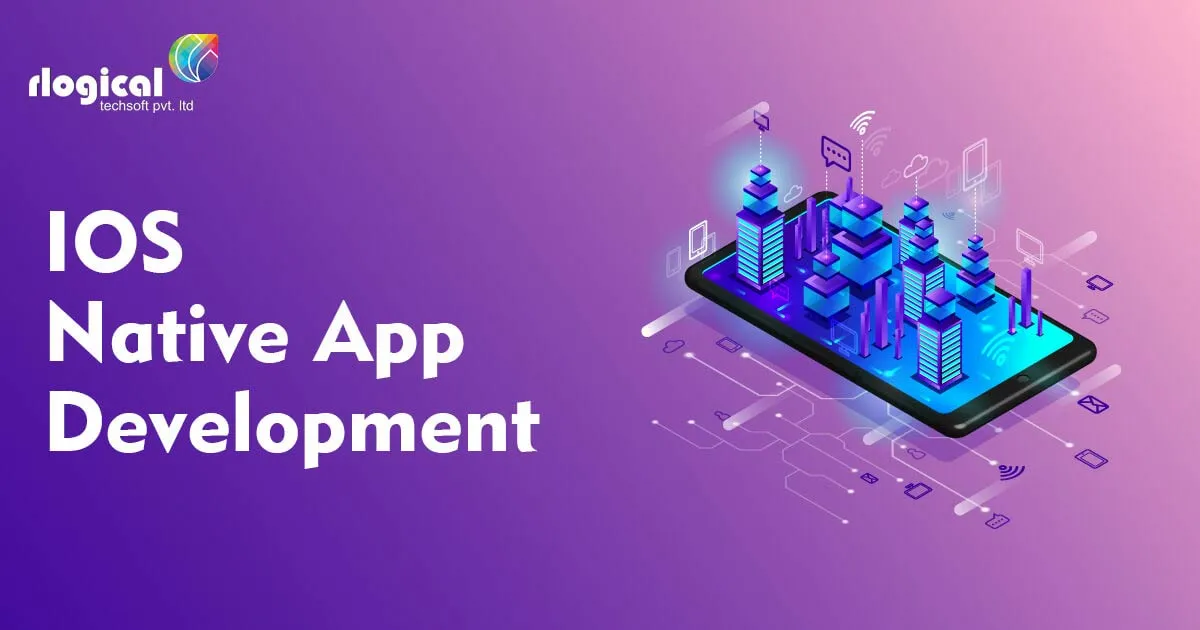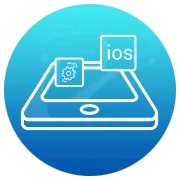
iOS is the most common OS used mainly in US, UK and Canada. We all know about iOS, but in this blog, we will see the mobile application development platform in iOS. iOS is a bit difficult to use and it has many in-built functionalities. There many iOS mobile development in the market but when we talk about the iOS native apps it clearly gives the idea of swift and objective – C.
- Swift
- Objective – C
- Swift
Firstly, let’s see what is swift?
- New programming language for iOS, OS X, watch OS and TV OS apps.
- Swift builds on the best of C and Objective-C, without the constraints of C compatibility.
- Swift adopts safe programming patterns and adds modern features to make programming
- The compiler is optimized for performance, and the language is optimized for development, without compromising on either.
Now we will have a look into why we use swift for the iOS mobile app development. There are few things to know about using swift for mobile development in iOS.
- The first major feature of Swift is “safe by default”.
- The improvements in app quality and stability over a huge developer community.
- Swift includes things like more pervasive strong typing through generics and type inference.
- Swift is compatible with existing Objective-C libraries.
- There’s no problem with writing new modules in Swift that interoperate with existing Objective-C code bases.
Significant features of Swift Programming Language are:
-
- Type aliases
- Tuples
- Optional
- Forced Unwrapping
- String interpolation
- Unicode
- Swift type inference
- Implicit Fall through
- Closures
- Enumerations
- Class- User defined data type that will become a building block of code where properties and methods added around certain functionality.
- Subscripts
- Extensions
- Difference in Classes and Structures
- Inheritance – permits a category to inherit the characteristics of another class
- Type casting at runtime
- Free up resources
- Reference count allows to refer over one to category instance Class declaration
- Structure declaration
- Value Type
- Reference type
- Identical operator
- Lazy stored properties
- Computed properties
- Property observers
- Global and Local variables
- Type properties
- Mutating
- Initialiser delegation
- Two types of initialiser: Designated and Convenience
Rule 1- selected initialiser ought to call designated initialiser from immediate biological group
Rule 2 – Convenience initialiser should call another initialiser from same category
Rule 3 – Convenience initialise should ultimately call selected initialiser
Fillable initialiser
- Deinitialzer
- Strong reference cycle
- Strong by default – weak with optional – unowned with value.
- Type casting– is a way to check the type of an instance – is & as operators
From these features discussed above we can analyse the pros & cons of the swift programming language.
| Pros | Cons |
|---|---|
| It is open source | Limited Talent pool |
| Swift’s structures are faster at runtime than classes as optimisation performance is done by compiler | Structs do not support inheritance. |
| Developer can impose full unbending code. | We don’t have identity (===) comparison. |
| As structs are value types, each instance is a unique facsimile of data. | A single struct made up of other value types?—?structs or enums. |
| Easy to read and maintain | Compatibility is not good |
| It is interoperable with Objective – C and it is scalable. | Speed is not enough. |
| Concise & cross device support | Less support with older versions of iOS. |
| Automatic memory management |
Objective – C
Now we will see what is Objective – C?
Objective – C is the programming language of Apple OS & iOS. It gives you language-level support for your object laterals and object graph management.
Why use Objective – C for iOS development?
There are few things to know about Objective – C with which you can analyse why objective – C is significant.
- There are large number of libraries existing in the objective – C
- Objective – C is habitual of handling exceptional situations.
- Pre-processor Usage: Pre-processor allows writing complex macros which facilitate the readability of code and allow beautiful expressions of complex structures.
- It has very high speed of static code analysis
- The variable initialization is very easy.
- It supports older version of iOS.
- Objective – C exists since more than 30 years and hence there are very less pitfalls and therefore the use of Objective – C is very easy.
We have always seen that there are always merits and demerits of each and every product. Hence now we will see the merits and cons of Objective – C:
| Merits | Demerits |
|---|---|
| Many third-party libraries & frameworks are available. | Syntaxes are very uncommon. |
| Good Documentation is available for understanding. | It is slower as it has dynamic runtime. |
| It is stable as it exists since long. | Needs to follow legacy while writing the code. |
| AIt can be easily integrated with C++. | It is hard to learn. |
At the end to conclude we will see the comparison of objective – C versus Swift.
| Swift | Objective – C |
|---|---|
| It can be easily learned. | Migration can be easily done. |
| It cannot be hacked. | Class based Object Oriented |
| Object Oriented and Functional | Cross – Platform. |
| Interactive Playground WYSIWYG editor | Basic Editor |
| It is simplified as it does not need instance variables. | Cumbersome as it needs instance variables. |
| It requires less time to compile as unchanged files are not compiled every time it executes. | Execution time is more as every time whole code is built for each change are made. |
| It supports functional programming. | It does not support functional programming. |
| It is easy to maintain as it resembles English language. | It is difficult to maintain. |
| It does not require to state the type explicitly. | Need to state the type explicitly. |
| Enum value is mapped directly. | Need to assign raw value to enum |
| It works on less coding. | Requires extensive coding |
| It unifies all the keywords which helps in reading the code easily. | Still it uses @ to insert new keyword. |
Rahul Panchal
Rahul Panchal is the Founder & Managing Director at Rlogical Techsoft Pvt. Ltd. He is a pioneer tech enthusiast who has assisted diverse enterprise solutions with a fresh perspective over the years. From integrating technologies like Full-Stack, .NET, Flutter & PHP, he has harnessed custom web or hybrid mobile app development projects. His creative outlook on the latest models of AI, ML, blockchain, and IoT, has made various businesses attain leading-edge success.
Related Blog
Categories
- All
- Amazon Web Services (AWS)
- ASP.Net Development
- Azure Web App
- Big Data Analytic
- Customize
- Digital Marketing
- Drupal Development
- E-commerce web development
- Education Mobile App Development
- Enterprise Application
- Event Management App Development
- Fintech
- Fitness App Development
- Food Delievery
- Front-End Development
- Healthcare App Development
- Hire Dedicated Developers
- Hotel Booking App
- IT Industry
- JavaScript Development
- Mobile App Development
- On Demand App Development
- On Demand Healthcare App Development
- PHP Development
- POS Software Development
- Real Estate Mobile App Development
- Retail Business App Development
- Salesforce
- Social Media Development
- Software Development
- Technology
- Transportation App Development
- UI/UX Design
- Web Design
- Web Development
- Web Services
- Web/Data Scraping Services
- WordPress



 Rahul Panchal in iOS App Development
Rahul Panchal in iOS App Development 




